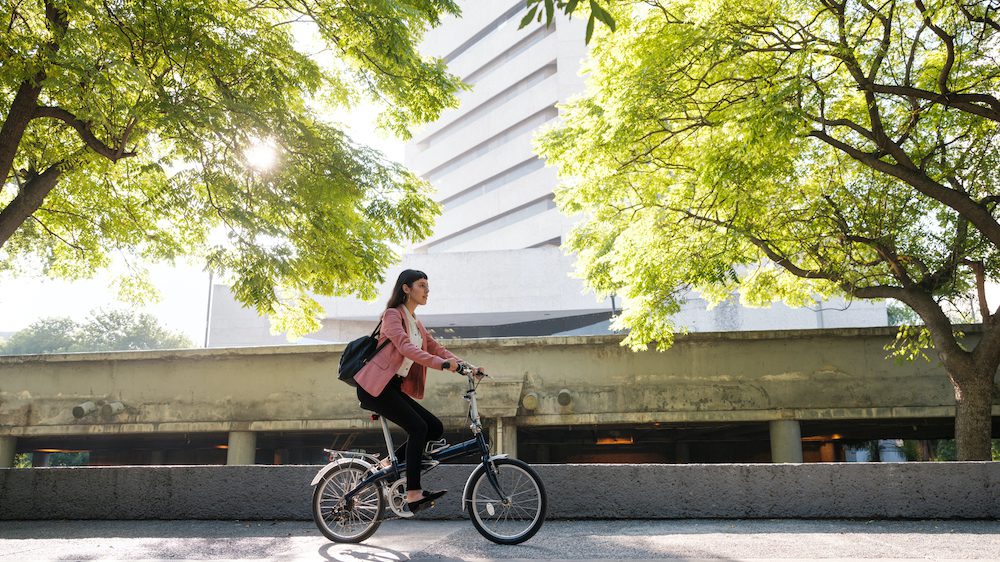
Getty Images
As we anticipate a return to normalcy after COVID-19, Earth Day is once again upon us—and with this day of worldwide celebration and hope comes a chance to see how eco-friendly our urban areas really are.
To help in this endeavor, LawnStarter has done a deep dive into the sustainability of 200 of our nation’s largest cities, examining 24 key variables, including the prevalence of zero-waste buildings, electric cars, farmers markets, and citywide laws designed to protect the environment.
So which city gets top props for going green? San Francisco, which has worked hard to preserve its surroundings through a range of policies from banning plastic bags to building bike paths to running its buses on biodiesel fuel. In fact, California in general is doing a good job saving the environment, having earned four of the top 10 spots.
Here’s a look at the most eco-friendly cities—and, in case you want to live there, the median home prices you can expect to pay based on Realtor.com data.
Most sustainable cities
- San Francisco, CA ($1.35M)
- Boston, MA ($799K)
- Sacramento, CA ($409K)
- Washington, DC ($599K)
- Baltimore, MD ($210K)
- Rochester, NY ($139.9K)
- San Diego, CA ($729K)
- Oakland, CA ($746.5K)
- Salt Lake City, UT ($449K)
- Seattle, WA ($739K)
Why big cities can still be green
While big cities often get a bad rap for belching up pollutants and doing a number on the environment, this study found that, by and large, they’re more eco-friendly than smaller urban areas.
“The most striking pattern we observed in our study is that larger cities tend to be greener than smaller cities,” says Patricia Davis, communications manager at LawnStarter. “For example, the most populated city in the country, New York, ranks at a respectable No. 14.”
One possible reason for this is that, aside from their extensive public transportation systems, “densely populated cities have to be really efficient to reduce their waste and carbon footprint,” says Davis. “It’s clear that keeping tightly packed cities clean can be a real challenge.”
Meanwhile, California has its own distinct reasons for taking extra good care of its environment. The state’s climate swings have had major ramifications for residents—think fires, drought, and sky-high electricity costs—making it more of a necessity to adopt green practices. However, other states in the U.S. can, and should, follow suit.
“It’s interesting to see several cities like Rochester, Baltimore, and Seattle ranking higher on the list than places in Florida, which have an abundance of sunshine and rain that could translate into huge energy savings if they choose to do so,” says Cara Ameer, a real estate agent in with Coldwell Banker in California and Florida.
In fact, cities in the Sunshine State hold five of the worst rankings on this list. Why? One simple reason pointed out by experts: Floridians love their cars.
“Transportation is the leading source of CO2 emissions, and Florida did away with vehicle inspections and emissions testing in 2000, which helps to explain the state’s higher carbon footprint,” says Davis.
One easy fix might be laws to promote more carpooling, and continuing the work-from-home trend, which tamps down on rush hour traffic.
Here’s a rundown of the least sustainable cities surveyed for this list.
Least sustainable cities
- Pasadena, TX
- Hialeah, FL
- Sunrise Manor, NV
- Metairie, LA
- Enterprise, NV
- Port St. Lucie, FL
- Cape Coral, FL
- Peoria, AZ
- Miramar, FL
- Pembroke Pines, FL
Are eco-friendly cities more expensive places to live?
While San Francisco may be a green dream in terms of sustainability, living here doesn’t come cheap, with median home prices hovering at a staggering $1.35 million. Which begs the question: Are green cities more expensive places to live?
Not necessarily.
“Just because a city ranks well on measures of sustainability doesn’t necessarily mean it’s expensive,” says Danielle Hale, chief economist at Realtor.com. “There certainly are some expensive markets on the list, such as San Francisco, Boston, and Washington, DC. But one-third of the other markets in the top 15 cities in this report are actually cheaper than the typical market, which means they have a lower median home price than the U.S. national median.”
Additionally, “some markets may not be cheap when compared to the typical U.S. home, but are a bit more affordable than surrounding areas,” Hale adds. “For example, home prices are lower in Sacramento and Oakland than San Francisco.”
So if you love sustainability but can’t stomach San Francisco’s prices, there’s still hope if you shop for homes farther afield.
The post The 10 Most Eco-Friendly Cities Where It’s Actually Easy Being Green appeared first on Real Estate News & Insights | realtor.com®.
source https://www.realtor.com/news/trends/the-10-most-eco-friendly-cities-where-its-actually-easy-being-green/
No comments:
Post a Comment